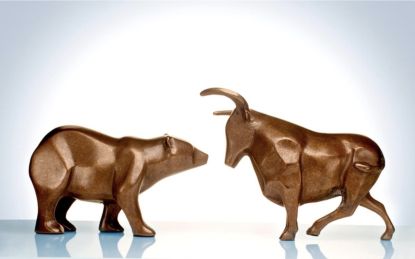If you ever tune into financial commentary, two of the most common terms you’ll hear are “bullish” and “bearish”. But what do they actually mean, and where on earth do they come from?
The definitions are very simple. A bull market is a rising market. So if you are bullish on an asset or a market, it means you think the price will go up. If a news item or economic data point is described as bullish for the market, then it’s seen as something that will drive prices higher.
A bear market is a falling market. So if you are bearish, it means you think the price of an asset or market will go down. And if a news item is bearish for a stock or for the market, it’s seen as something that will drive prices lower.
Subscribe to Kiplinger’s Personal Finance Be a smarter, better informed investor.
Save up to 74%
Sign up for Kiplinger’s Free E-Newsletters Profit and prosper with the best of Kiplinger’s expert advice on investing, taxes, retirement, personal finance and more – straight to your e-mail.
Profit and prosper with the best of Kiplinger’s expert advice – straight to your e-mail.
A very loose definition of a bull market – in other words, a market that is viewed as being on the rise more generally – is one that has risen by more than 20% from its most recent low. A similar definition – but in the opposite direction – applies to bear markets. To be clear, there is nothing especially significant about the figure of 20% – it’s just a big number.
Some market analysts argue for more thoughtful definitions of bull and bear markets that take into account underlying conditions and span a wider period of time. These are sometimes known as “secular” or “structural” bull or bear markets.
So that’s pretty simple. Bulls are optimistic about asset prices, while bears are pessimistic.
But where do the terms come from? No one really knows for sure. But one theory is that they come from a rather grisly bloodsport – popular in both Elizabethan England and gold rush era California – in which a bull would be pitted against a bear. Spectators would bet on the outcome. Thus you have ”bulls” versus “bears”. In this case, bulls represent a rising market, because when bulls attack, they thrust their horns upwards, whereas when bears attack, they claw downwards.
A related theory is that the term “bear” originated with the market for bearskins. Middlemen in the trade would sell skins before they’d bought them from trappers. In effect, they were short-selling. Hence the term “bear” – with its opposite being “bull”.
For more on bull and bear markets, subscribe to our Investing Weekly e-newsletter.
